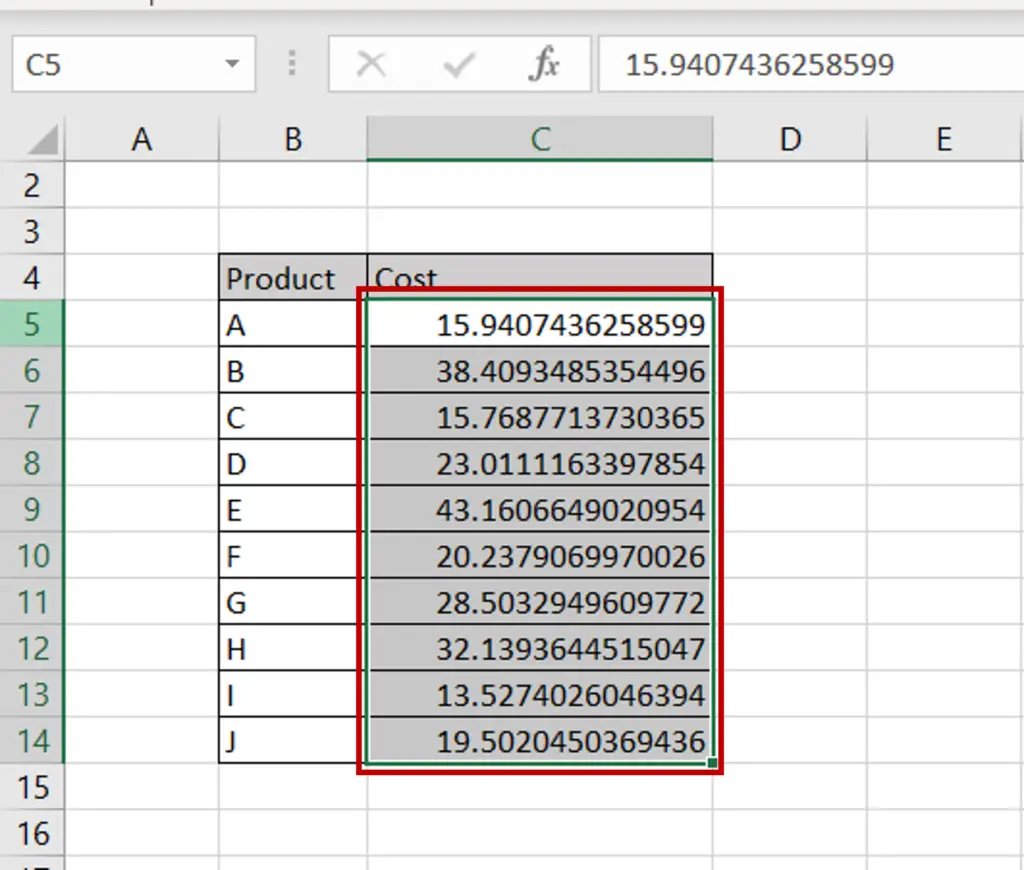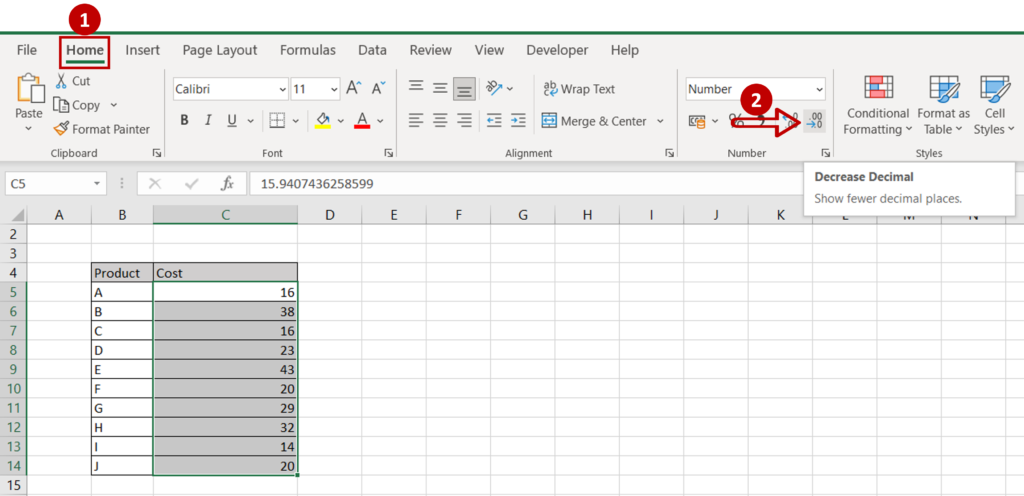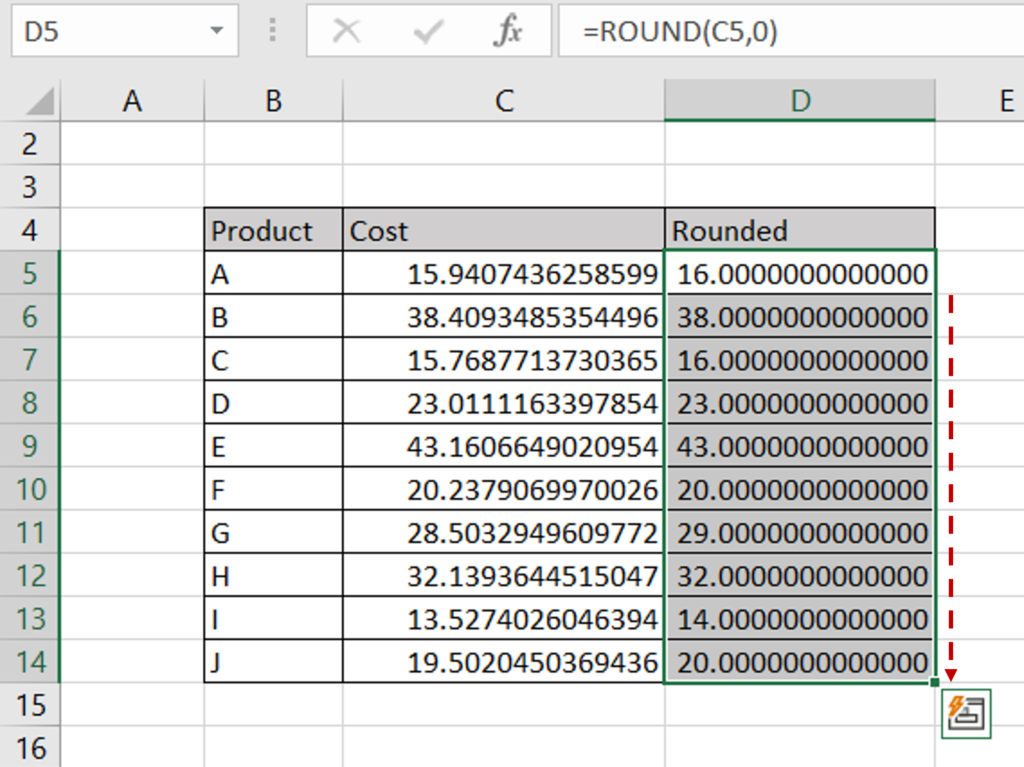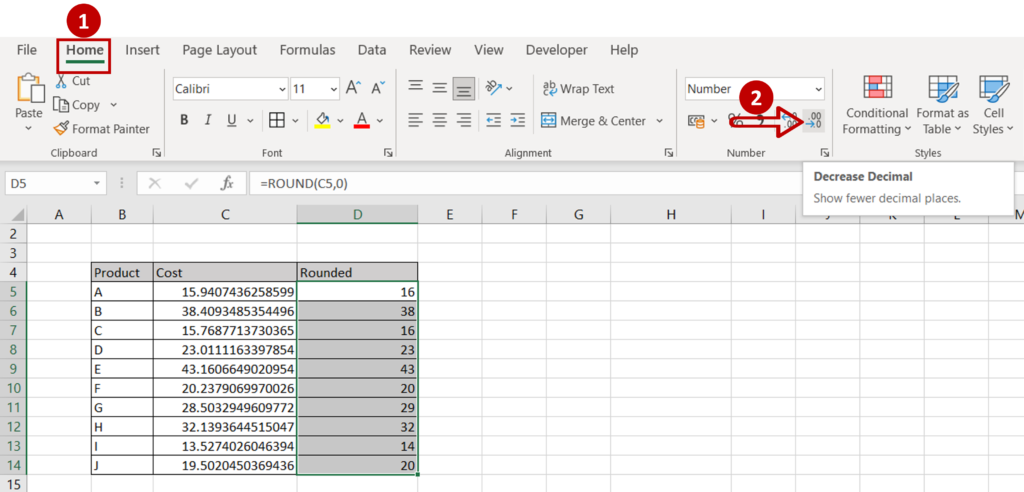How to get rid of decimals in Excel
You can watch a video tutorial here.
Excel is frequently used for calculations and has many functions to help with basic mathematical operations. The way a number is displayed in a cell is different from the way that it is stored. When working with numbers, you may want to get rid of the decimals so that a whole number is displayed. In Excel, there are 2 ways that you can get rid of the decimals:
- Change the way the number is displayed by using the button on the ribbon
- Round off the number to the nearest whole number using the ROUND() function
- Syntax: ROUND(number, num_digits)
- number: this is the number to be rounded
- num_digits: the number of decimal places to which the number is to be rounded
Option 1 – Use the button on the ribbon
Step 1 – Select the data

- Select the data for which the decimals are to be removed
Step 2 – Decrease the decimal places

- Go to Home > Number
- Keep clicking the Decrease Decimal button until all the decimal places have disappeared
Note: this only changes the way that the number is displayed and does not get rid of the decimal places permanently.
Option 2 – Use the ROUND() function
Step 1 – Add the ROUND() function to the number

- Select the cell next to the number to be rounded
- Type the formula using cell references:
=ROUND(Cost,0)
- Press Enter
Step 2 – Copy the formula

- Using the fill handle from the first cell, drag the formula to the remaining cells
OR
- Select the cell with the formula and press Ctrl+C or choose Copy from the context menu (right-click)
- Select the rest of the cells in the column and press Ctrl+V or choose Paste from the context menu (right-click)
Step 3 – Decrease the decimal places

- Go to Home > Number
- Keep clicking the Decrease Decimal button until all the decimal places have disappeared
Note: this method gets rid of the decimals permanently and does not just change the way that the number is displayed.



